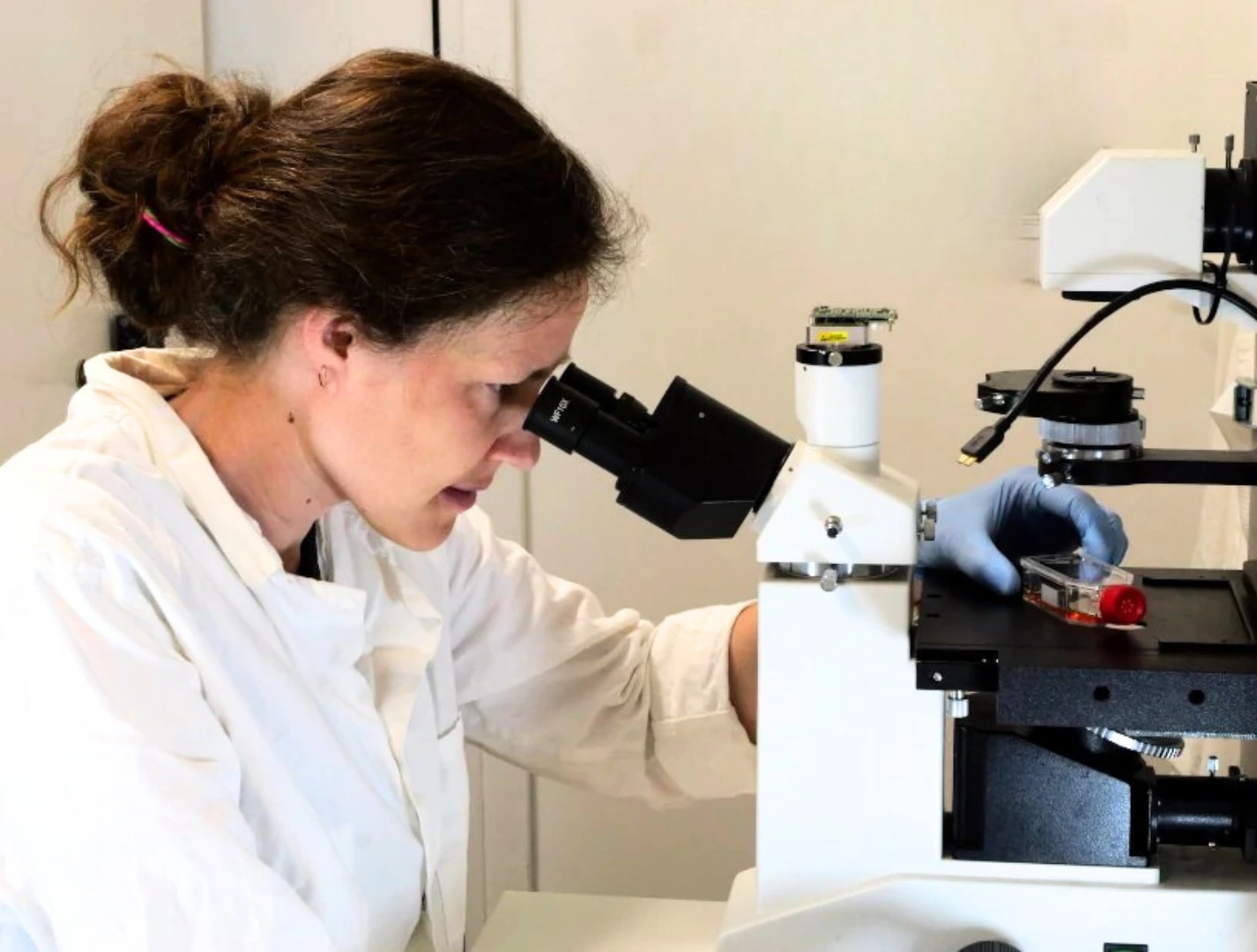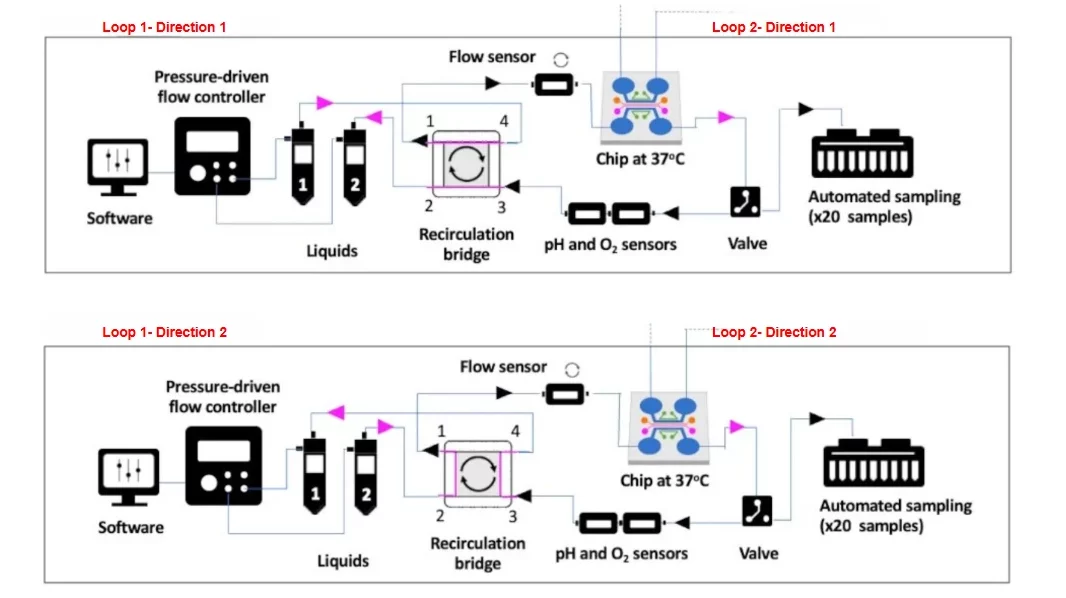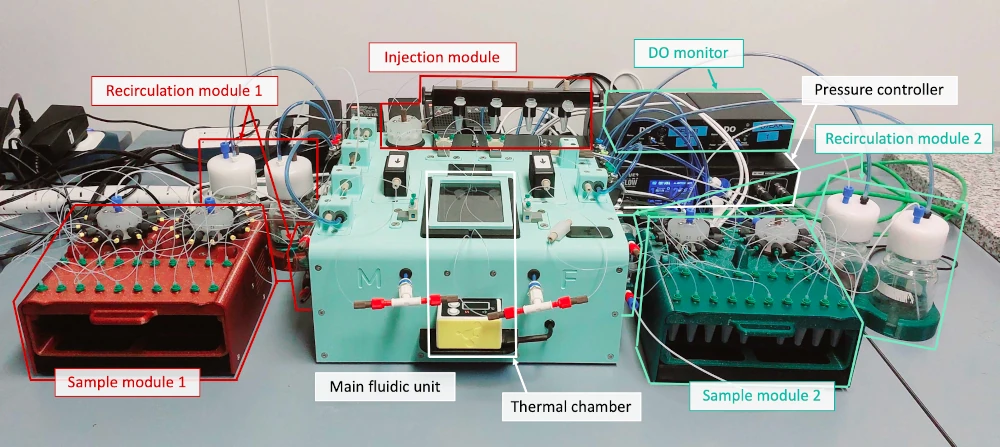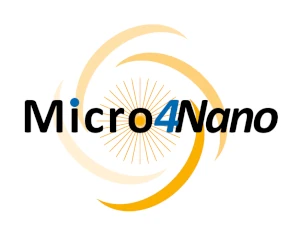Molecular Transport Platform
Advanced platform for controlled molecular transport studies
Automated platform
Reduced hands-on time for extended studies
Independently regulated microenvironments
Customize parameters on either side of the barrier
Dynamic results over time
Characterize molecular transport kinetics

Need a microfluidic SME partner for your Horizon Europe project?
Exploring complex interactions with barrier models
Our new microfluidic platform is designed to help researchers study molecular transport across different barriers in the body, such as the blood-brain barrier, placenta and gut. This kind of research is becoming more popular because it allows scientists to understand complex interactions between molecules and cells in a controlled way. By focusing on molecular transport, researchers can gain deeper insights into how substances move through these barriers [1].
However, these experiments can be tricky to set up and reproduce in different labs. To solve this problem, our team created a system that automates the key parts of molecular transport experiments. This makes it easier for researchers to get consistent results and study how molecules move in different environments, which is crucial for advancing our understanding of molecular transport [2].
Platform Setup
Our molecular transport platform is designed with two sides, each capable of independent control and monitoring.
Each side includes:
- A recirculation system to continuously perfuse the cells or microenvironment with a fail-safe mechanism to prevent clogging.
- A temperature controller to maintain a stable environment.
- O2 sensors to monitor the microenvironment.
- A sample collector for automated, time-resolved collection.
- Compatibility with various cross-membrane chips to connect both sides.
The functionalities are centrally controlled via a dedicated software interface.

References
Image:
Batista, P. H. J., & Quilles Jr., J. C. (2020). Drug Metabolites: General Features and Most Applicable Analytical Methods of Studies. [Journal Name].
Text:
Maoz, B. M., et al. (2018). A linked organ-on-chip model of the human neurovascular unit reveals the metabolic coupling of endothelial and neuronal cells. Nature Biotechnology.
Park, T. E., et al. (2019). Hypoxia-enhanced blood-brain barrier chip recapitulates human barrier function and shuttling of drugs and antibodies. Nature Communications
Compatibility and applications
- Drug permeability studies
Studying the permeation of drugs across cell monolayers. - Toxicology assays
Evaluating the impact of toxic substances in vitro. - Cancer research
Analyzing the transport of cancer cells through the endothelial barrier. - Nutrient transport
Mimicking the transport of nutrients into artificial tissues. - General cell culture
Perfuse the cells continuously, with a fail-safe mechanism in case of clogging - And many more!
Molecular transport platform technical specifications
| Characteristics | Specifications |
|---|---|
| Accuracy | +/- 2.5 mbar |
| Flow rates | 0-5ml/min depending on flow sensors |
| Air consumption | few ml/min |
| Response time | 140 ms |
| Settling time | 2750 ms |
| Overshoot | 140 ms |
| Recirculation Bridge | Internal volume: 4 ml/bridge |
Automated sampler
| Characteristics | Specifications |
|---|---|
| Number of samples | Up to 20 samples per side |
| Volume of collection vial | 1,5 to 2 ml Eppendorfs |
O2 sensors
| Components | Technical specifications |
|---|---|
| Wetted Material | PTFE |
| Dimensions | 10x10x10 cm (control unit)
3x1x1 cm (sensing unit) |
| Admissible Flow rates | 1-100 µL/min |
| Accessible Oxygen Levels | 0-20 %DO |
| Stability of the control | +/- 0.5 %DO/td> |
| Dynamic range of control | 0.5% DO / min |
| pH range | 6-8 pH |
| Stability of the control | +/- 0.5 pH |

Frequently asked questions
How many chips can we run at the same time?
Currently, the platform can hold only one cross-membrane chip.
What are the characteristics of the membrane of the chip?
The platform was designed to host most types of chip, whether commercial or home-made, with the right adapters. So, the membrane technical specifications depend on your choice of material.
Can the platform be placed inside a CO2 incubator?
No, the platform was designed to be independent of the incubator.
Do I need to use a specific chip?
No, the platform was designed to host most chips, whether commercial or home-made, with the right adapters.
Do you provide the chips with the cells already grown inside?
No, we provide the fluidic circuit and automation to run various barrier model experiments with this platform. The biological part is out of our scope. You will need to develop and culture your cells yourself, and we can help you integrate your biological model into the platform.
How can we help your experiment?
This pack is in beta testing phase. So, although the instruments are not fully industrialized, we can provide extensive support as part of our beta testing program. Get in touch to see if you are eligible.





